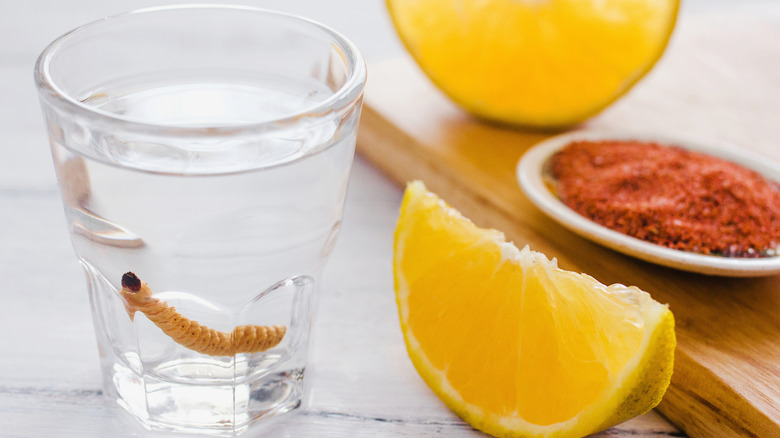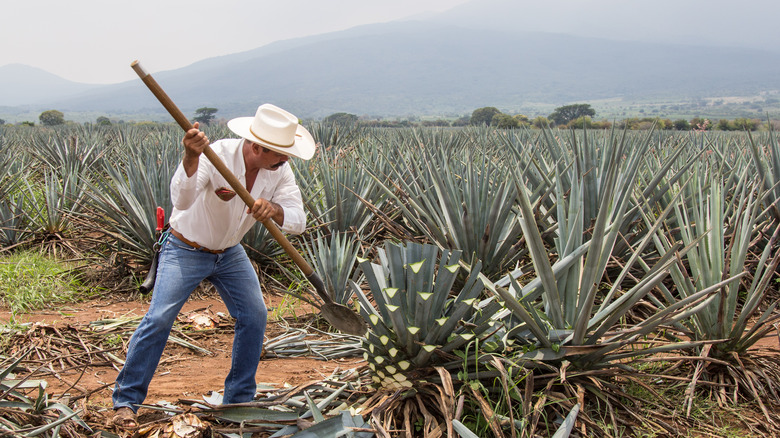The Myth You Should Stop Believing About The Tequila Worm
The alcohol industry is full of zany stories that pass back and forth between bartenders and those who frequent their barstools — so much so that it can be hard to tell what's true anymore. Seated across from shelves of bottles filled with substances known by the otherworldly term "spirits" and wrapped in labels depicting fantastical figures like peg-legged pirates and sea monsters, you may have heard the myth of the tequila worm and questioned its veracity. In fact, there may be a worm in one of those bottles of booze, but not where you'd expect it.
The "tequila worm" does exist, but its name is actually a misnomer. This creature can only be found in bottles of the Mexican liquor, mezcal. And while we're getting into specifics, it's worth noting that the second part of its name is also technically incorrect. The so-called "worm" is a moth larva, known in Spanish as the "gusano de maguey." It is the same insect used in "sal de gusano" (aka worm salt), which is traditionally served along the salted rim of a glass of mezcal.
Why there's an insect in your mezcal
The story of the tequila worm dates back to the 1940s. It is believed that a Mexican entrepreneur named Jacobo Lozano Paez was the first person to sell a bottle of mezcal with an insect floating inside. Today, the initial motivation behind this business decision is unclear. Some claim it was merely a marketing ploy making false promises to the consumer — in certain stories, the bug was meant to bring good luck. In others, it supposedly indicated the supreme quality of the intensely alcoholic spirit.
While it may be hard to understand why anyone would intentionally try this particular marketing strategy, it's easy to see how an insect could end up in a bottle of booze accidentally. The "gusano de maguey" is named for the maguey plant, which is both its source of sustenance and the core ingredient of mezcal. To make this spirit, the heart of the maguey plant — known as the "piña" — is roasted, fermented, and finally distilled. During this process, a moth larva would sometimes be trapped in the plant and make its way through to bottling.
The confusing origins of the tequila worm
The many similarities between mezcal and tequila may be to blame for the widespread confusion at the heart of the tequila worm myth. Both spirits hail from Mexico, where they are made according to similar production processes that ferment and distill pieces of the agave plant. There are three types of mezcal, which can be made from up to 50 species of agave, while tequila can be made from only one species. In this way, tequila is actually a type of mezcal. That being said, the Mexican Standards Authority has a series of rules around tequila production, including regulations that prohibit the inclusion of larvae in the liquid.
The presence of the tequila worm does not determine the quality of the spirit, but mezcal that isn't smoky can be a red flag. While the addition of the gusano de maguey is not essential to the production process, the roasting of the plant plays a key role in determining its flavor.



